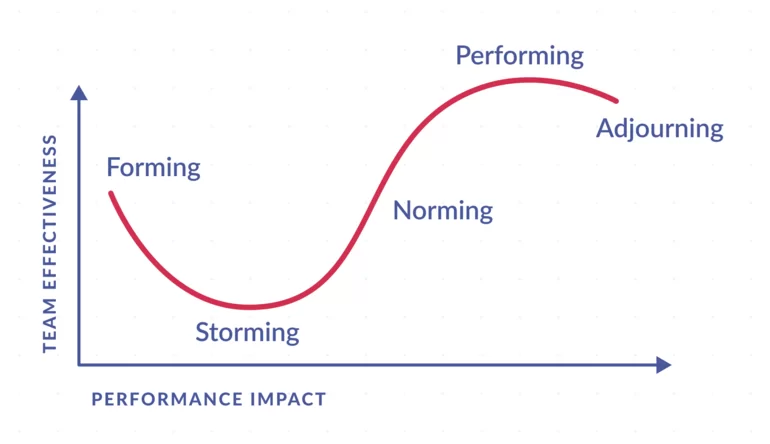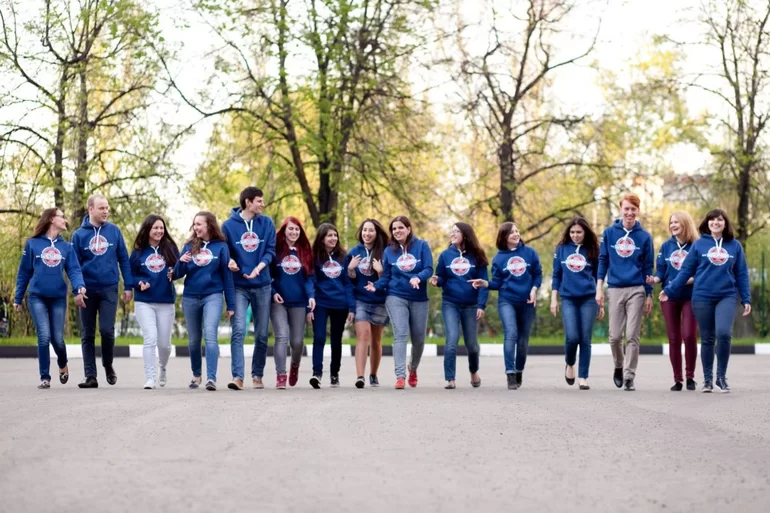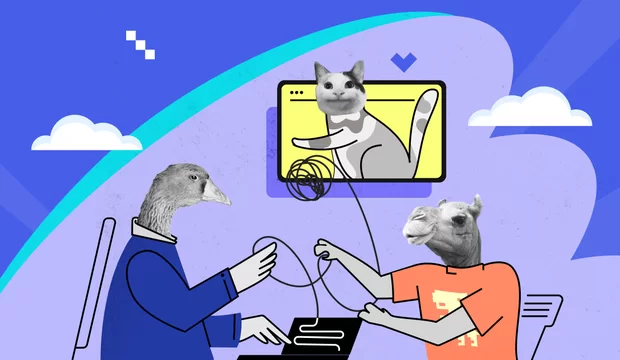Tuckman’s model of group development is the very basics of team management, and I believe most of you are familiar with them. But I don’t want to talk about team management; I want to discuss team leadership.
Management is doing things right; leadership is doing the right things.
— Peter Drucker
A leader strives to unlock their team members' potential by achieving the project goal, while a manager simply distributes tasks. Nowadays, no one wants to be treated as a resource; therefore, leadership is a more viable and healthy way to achieve outstanding results. And traditional models should be perceived from this point of view.
So, let’s examine Bruce Tuckman’s stages of group development and the role of a true leader in each of them.
Tuckman's model of group development
Psychologist Bruce Tuckman first came up with the phrase “forming, storming, norming, and performing” in his 1965 article, “Developmental Sequence in Small Groups.” That was how he described the path that most teams follow on the way to high performance. Later, he added the fifth stage, “adjourning” (which is sometimes known as “mourning”).

Let’s look at Tuckman's model in detail and see what involvement is needed from a leader at every stage.
Forming stage of group development
In this stage, most team members are usually positive and polite. Some are anxious because they are in an uncertain environment surrounded by new people. And sometimes without a clear understanding of what the project is about.
This stage of Tuckman's team development model lasts for some time as people start working together, getting to know each other and their responsibilities.
Role of the leader: as a leader, you play a dominant role because team members’ roles and responsibilities are not clear yet. I recommend having personal talks with all the team members to find out their personal goals and interests in the project. That is essential information for a leader in further stages.

Storming stage of group development
After some time, a team moves to a storming phase. Team members start pushing against the boundaries established in the forming stage. Many teams fail at this stage.
Storming is an inalienable part of any team experience. It usually starts when there is a conflict between team members’ natural working styles. Everyone has their own approach to work, and the team's success depends on proper communication and willingness to compromise. However, if different working styles cause unforeseen problems, they may become frustrating. The leader must feel such negative trends within the team and efficiently manage conflicts.
Storming can also happen in other situations. In this stage of Tuckman's group development model, members know each other as well as their responsibilities better. They may feel deceptive overconfidence and therefore challenge your authority or jockey for position.
If you have not defined clearly how the team will work, people may feel overwhelmed by their workload, or they could be uncomfortable with the approach you are using. Some may question the team’s goal and resist taking on tasks because of that. Team members who keep working hard may be even more stressed without support from others and established processes.
Role of the leader: reduce tension within your team, manage conflicts, stay committed to the team goal, and lead by example. If things go worse and conflicts occur often, organize a feedback session or hot chair exercise with an external moderator.
This stage requires the leader’s utmost attention and involvement.

Norming stage of team development
Gradually, the team moves into the norming stage. Your team members understand your role in the project and start respecting your authority as a leader. They learn how to deal with their differences and appreciate colleagues’ strengths.
Now that your team members got to know each other better, they may start socializing together and even asking for help or providing constructive feedback. Team members develop a stronger commitment to the team's purpose, and the first results appear.
The leader should be warned that a prolonged overlap between storming and norming is a usual thing because new difficult tasks may throw the team back into behavior from the storming stage.
Role of the leader: motivate team members with the first results, show them that you are on the right track, and encourage them to move to the performing stage. Drawing attention to the first feasible results is huge for nutritioning motivation. People understand that the painful storming stage was not in vain and start to value each other and the project even more.

Performing stage of team development
During the norming stage, the team works well, and you reach the performing stage when hard work is king. You are heading to achieving the team’s goal very fast. The processes that you have set up support this well.
This is the stage of maximum efficiency and productivity; everyone enjoys working together and sees progress toward the goals.
Role of the leader: now you can delegate much of your work and concentrate on developing team members. Here is your time to improve your talent development, mentoring, and coaching skills because your team manages all work processes without your direct involvement.
How cool is this — to know what each one of the team members is capable of and fully rely on the team? And for the team leader, it is amazing to see the team running like clockwork.

Adjourning stage of group development
Many teams will reach this stage of Tuckman's theory eventually. For example, some teams exist only for one project, and even permanent teams may be reallocated through organizational restructuring.
Team members who are afraid of changes or have become close friends with their colleagues may find this stage difficult since their future now looks uncertain.
Role of the leader: facilitate the values reinvention and experience reflection. Also, the team leader can suggest ways to stay in touch even after the project comes to an end. An intense experience you all got through working together is a great bonding tool, so it is no surprise if you become good friends afterward. I still keep in touch with my previous teammates. We do care about each other and chat a lot, despite it having been more than three years since we finished the project.

Final thoughts
To sum it up, I would like to say that the leader's main task is to shorten the storming stage and prolong the performing stage as much as possible. This is the key to high team performance.
I hope this information was useful for you. If you have other questions, contact us, we’re happy to help.
Share this article with people you think might need it, and let us know what you think on Twitter @ADCIsolutions.




